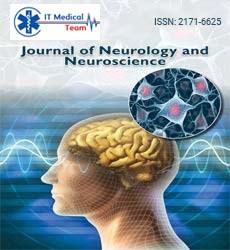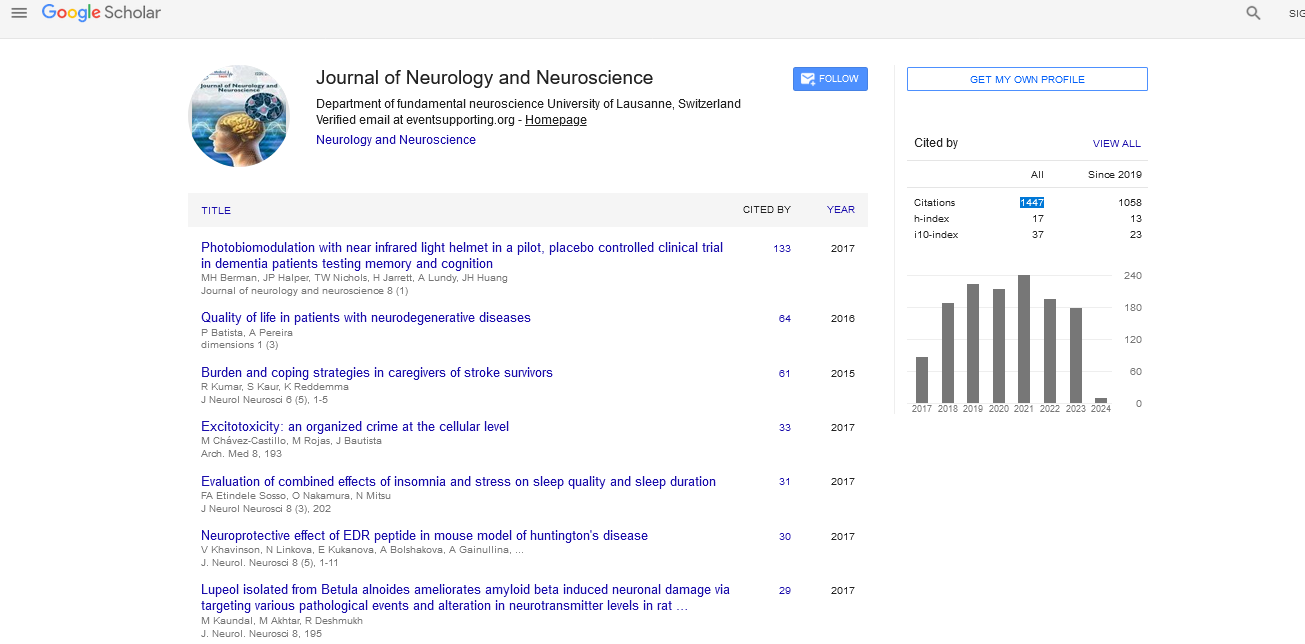Opinion - (2024) Volume 15, Issue 6
The role of self-regulation in virtual learning: A feasibility study on children's attention management
Fatimha Walin*
Department of Medicinal and Health Products Sciences, University of Pisa, Pisa, Italy
*Correspondence:
Fatimha Walin, Department of Medicinal and Health Products Sciences, University of Pisa, Pisa,
Italy,
Email:
Received: 27-Nov-2024, Manuscript No. ipjnn-25-15490;
Editor assigned: 29-Nov-2024, Pre QC No. P- 15490;
Reviewed: 13-Dec-2024, QC No. Q-15490;
Revised: 18-Dec-2024, Manuscript No. R-15490;
Published:
25-Dec-2024
Abstract
Traditional educational settings have seen major transformation due to the global shift towards virtual learning environments, which has been accelerated by the COVID-19 pandemic. New opportunities and problems have arisen as a result of this change, especially with regard to kids' capacity to control their own attention in online learning environments. Self-regulation of attention, which includes the ability to stay focused, control distractions, and persevere through activities, is a crucial skill for academic achievement. In order to comprehend the effectiveness, difficulties, and resources required for successful implementation, this feasibility study investigates the possibility that kids could learn and use self-regulation techniques in virtual learning environments. Self-regulation is the process through which people manage their feelings, ideas, and actions in order to accomplish their objectives. Self-regulation in educational settings includes goal-setting, progress tracking, and behavior modification to maximize learning results
INTRODUCTION
Traditional educational settings have seen major
transformation due to the global shift towards virtual
learning environments, which has been accelerated
by the COVID-19 pandemic. New opportunities and
problems have arisen as a result of this change, especially
with regard to kids' capacity to control their own
attention in online learning environments. Self-regulation
of attention, which includes the ability to stay focused,
control distractions, and persevere through activities,
is a crucial skill for academic achievement. In order to
comprehend the effectiveness, difficulties, and resources
required for successful implementation, this feasibility
study investigates the possibility that kids could learn
and use self-regulation techniques in virtual learning
environments. Self-regulation is the process through
which people manage their feelings, ideas, and actions
in order to accomplish their objectives. Self-regulation
in educational settings includes goal-setting, progress
tracking, and behavior modification to maximize learning
results [1].
DESCRIPTION
Significant variation in students' self-regulation
abilities and difficulties is revealed by the preliminary
survey. Common problems found include trouble
focusing, efficiently managing time, and coping with
distractions from domestic settings. Additional resources
and assistance are needed to help pupils adjust to virtual
learning, according to parents and teachers. enhanced
ability to control oneself. The use of gamified learning
platforms and attention-tracking tools helps sustain
student interest and participation. Students demonstrate
improved goal-setting, progress-tracking, and distractionmanagement skills. The study emphasizes how focused
interventions can help kids in online learning environments
develop their self-regulation abilities. Particularly useful
techniques for assisting pupils in controlling their
attention and maintaining focus include goal-setting and
mindfulness exercises [2, 3].
The use of technological tools is essential for
promoting self-control. Students can become more
conscious of their focus levels and modify their behavior
by using attention-tracking software, which gives them
real-time feedback. Students find the learning process
more interesting and inspiring when using gamified
learning tools. Notwithstanding the favorable results, a
number of obstacles still exist. The effectiveness of the
intervention may be impacted by variations in the home
circumstances and technological access of the pupils.
Furthermore, the necessity of continuous assistance and
2 â??
15 (06) 2022: 001-002 © J Neurol Neurosci
1. Sadeghi H, Shabani Y, Pakniyat A, et al. Road crashes in adults
with attention deficit hyperactivity disorder and risky driving
behavior. Iran J Psychiatry. 2020; 15(2):105.
2. Thomas R, Sanders S, Doust J, et al. Prevalence of attentiondeficit/hyperactivity disorder: A systematic review and metaanalysis. Pediatrics. 2015; 135(4):e994-1001.
3. Mochrie KD, Whited MC, Cellucci T, et al. ADHD, depression, and
substance abuse risk among beginning college students. J Am Coll
Health. 2020; 68(1):6-10.
4. Bink M, van Nieuwenhuizen C, Popma A, et al. Behavioral
effects of neurofeedback in adolescents with adhd: A randomized
controlled trial. Eur Child Adolesc Psychiatry. 2015; 24:1035-1048.
5. Jorge J, Grouiller F, Ipek Ã?, et al. Simultaneous eegâ??fmri at ultrahigh field: Artifact prevention and safety assessment. NeuroImage.
2015; 105:132-144.
reinforcement of self-regulation abilities emphasizes
how crucial it is for educators, parents, and children to
work together. This feasibility research offers insightful
information about how to improve kids' attentional selfregulation in online learning environments. The results
imply that students can acquire the abilities required
to succeed in virtual learning settings with the right
techniques and technology assistance. The long-term
effects of these treatments should be further investigated
in future studies, and other elements that can promote
effective self-regulation in various educational settings
should be found. [4,5].
CONCLUSION
Regular training sessions on self-regulation techniques
should be incorporated into school curricula to assist pupils
in acquiring these vital abilities. To improve engagement
and encourage self-regulation, educators and schools
should make use of gamified learning platforms and
attention-tracking technologies. To strengthen selfregulation abilities and handle any issues that may
come up, teachers' and parents' ongoing assistance and
feedback are crucial. It is important to make sure that
every student has access to the tools and technology they
need to fully engage in online learning settings. analyzing
how self-regulation techniques might be modified to
accommodate pupils with different backgrounds and
degrees of technological access. examining the ways in
which parents and educators may encourage self-control
and pinpoint the most effective ways to work together.
There are drawbacks and advantages to switching to
virtual learning environments. This feasibility research
shows that students can improve their capacity to selfregulate their attention, which will increase engagement
and academic results, with the right technological support
and focused treatments. Teachers can assist students in
navigating the challenges of virtual learning and realizing
their full potential by including these tactics into virtual
learning courses and offering continuous support. In
order to meet the various requirements of students and
guarantee fair access to high-quality education in the
digital era, future study and ongoing development of
these interventions will be crucial.
REFERENCES
- Sadeghi H, Shabani Y, Pakniyat A, et al. Road crashes in adults with attention deficit hyperactivity disorder and risky driving behavior. Iran J Psychiatry. 2020; 15(2):105.
Google Scholar, Crossref, Indexed at
- Thomas R, Sanders S, Doust J, et al. Prevalence of attention-deficit/hyperactivity disorder: A systematic review and meta-analysis. Pediatrics. 2015; 135(4):e994-1001.
Google Scholar, Crossref, Indexed at





